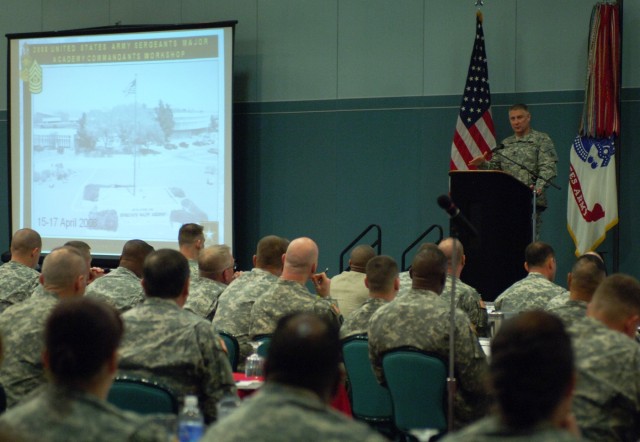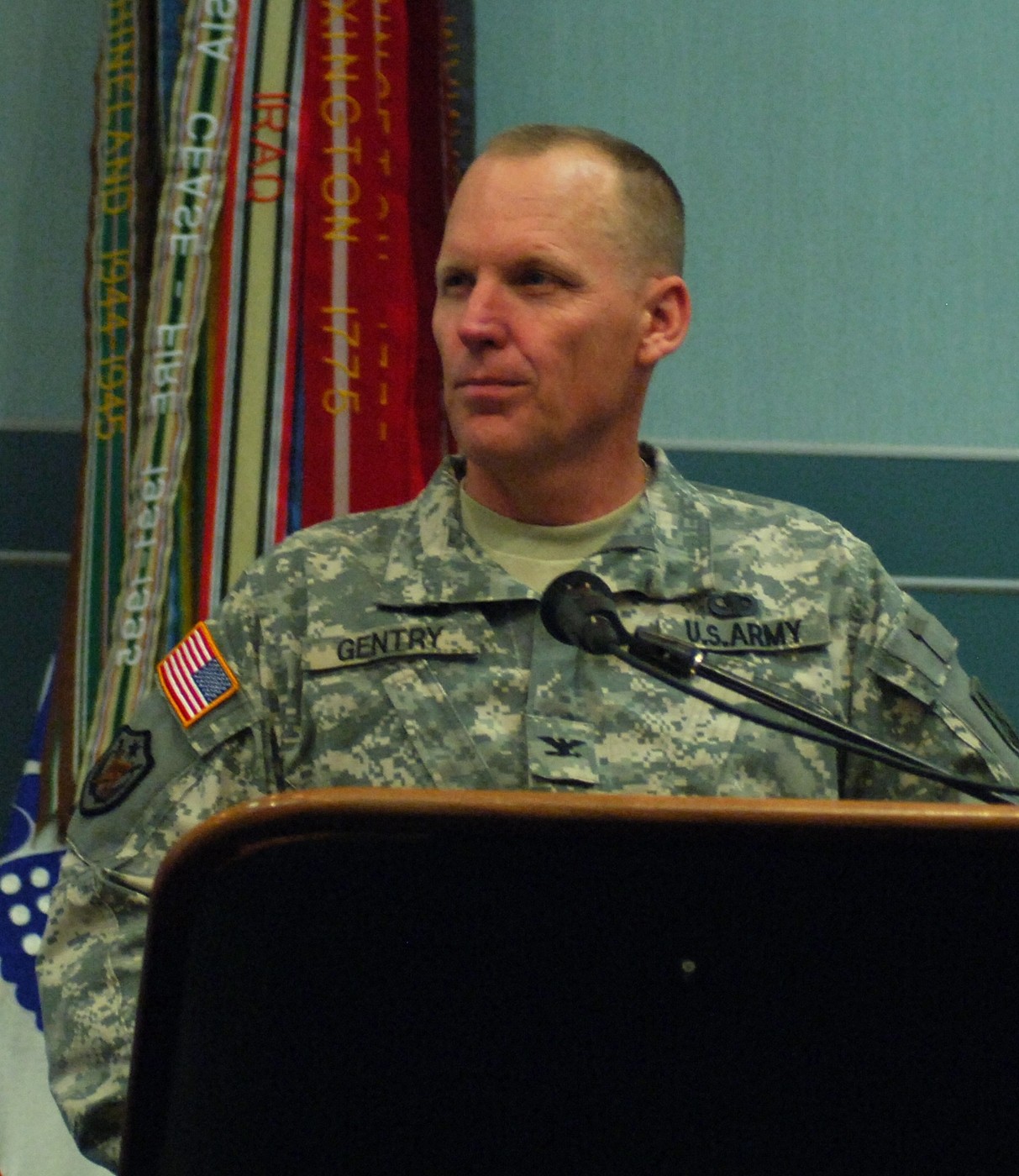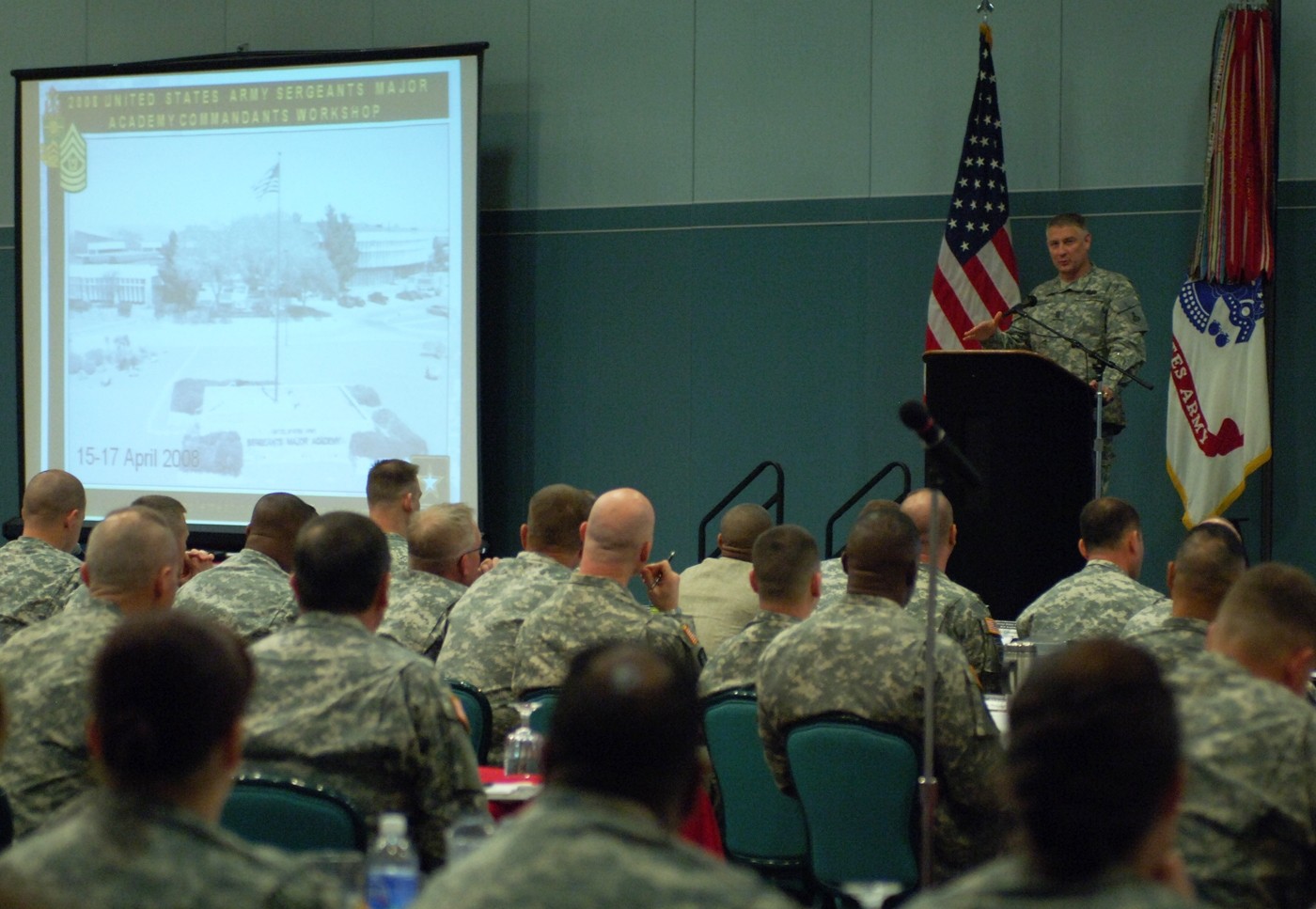Transforming the Noncommissioned Officer Education System looks simple enough on a PowerPoint slide - rename courses, shuffle around or delete some tasks, and add a few structured self-development programs. But what level of NCO should attend those renamed courses, and when' Which tasks should stay where they are, move to a different course, or simply be deleted altogether' Exactly what is structured self-development and when and how are NCOs supposed to complete it' What resources are necessary; are they available' And will one approach work for all Army components: Active, Army Reserve and National Guard' It doesn't seem so simple anymore, and there's no secret vault behind that PowerPoint slide, that holds the answers to these or many other questions like them. The answers instead live in the first-hand perspectives and experiences of the NCOs who serve as commandants and instructors at the Army's NCO academies; the NCOs who must turn that simple PowerPoint slide into a complex reality.
More than 150 commandants and senior NCOs from NCO academies throughout the Army gathered for the 2008 Commandants Workshop held in the Centennial Club, April 15-17 at Fort Bliss, Texas, to share their professional opinions and discuss ways to make the far-from-simple NCOES transformation as successful and beneficial as possible.
The U.S. Army Sergeants Major Academy hosts the workshop annually as both a training seminar and a forum for sharing and brainstorming NCOES and NCO academy topics. This year USASMA brought in subject matter experts from its Directorate of Training and Doctrine and Quality Assurance Office and from the Army and Training and Doctrine Command G3 shops to educate attendees on the ongoing and future changes intended to transform NCOES into an accelerated, constant and relevant system that will prepare NCOs for the expanded roles they play on today's battlefield.
"We're here to share and to work," said Col. Donald Gentry, USASMA commandant, as he welcomed attendees and challenged them to exercise their voices during the workshop. "This is an incredibly powerful forum [and] we need your input so [USASMA] can provide a unified front as we relay your experiences and suggestions to [TRADOC]."
But before answering Gentry's challenge, the attendees were briefed on the strategic-level vision of where NCOES is and the direction it must go to truly meet the mission of training the NCO Corps of an expeditionary force.
"Our NCOES is imitated throughout the world," said Sgt. Maj. Robin Bercaw, TRADOC G3/5/7 sergeant major. "The system we have now is a great foundation, but in the next couple of years we need to make some sweeping changes ... our NCOs must prepare for full spectrum operations."
He explained the parts of NCOES transformation that many attendees were already aware of - NCO development will be migrated downward so Soldiers will receive certain training earlier in their careers, the current Basic Noncommissioned Officer Course will be renamed the Advanced Leader Course, and the Advanced Noncommissioned Officer Course's new title will be the Senior Leader Course.
But, he said, "There is so much more to [NCOES transformation] than just a name change, it's really a refocus of how, what, who and when we train, which in many cases can be more tactical than strategic ... happening among the commandants and instructors who are actually training the NCOs and seeing first-hand what works and doesn't."
He added that NCOES must exist at three different levels - operational, institutional and self-developmental - and must leverage technology, all the while being able to "move forward, adapt and be flexible" in order to create the broadly skilled warriors necessary today.
Establishing structured self-development programs and transitioning the common core phase of BNCOC from a resident to a distance learning delivery method were a few of the examples Bercaw gave of how NCOES can attend to those three levels and employ technology.
"Pilots for these things are either happening or about to happen," he said. "But we need the eyes and the ears of commandants and instructors to really understand if and how they are going to work across all components in NCOES - if not, then what do we need to do to make them work'"
He asked the senior NCOs to answer the question, "With the current approach to NCOES transformation, is the glass half empty, half full, or do we have the wrong glass all together'"
Following Berclaw's words, the attendees also received more detailed briefings on the BNCOC Common Core distance learning concept, the Warrior Leader Course redesign, and the migration of tasks from and eventual deletion of the current First Sergeant Course.
Armed with day one's information and more importantly their own professional experiences, the academy commandants and senior NCOs spent day two literally working in one of five groups - each monitored by subject matter experts and faced with a different problem statement related to an element of NCOES transformation.
As they broke into their designated groups, Command Sgt. Maj. Raymond Chandler, USASMA command sergeant major, reminded them that, "this stuff you've been briefed on, a lot of it is not locked in concrete [so] don't limit your discussion to what we currently do, rather push the boundaries to figure out what we need to do."
The problem statements addressed a wide-range of subjects including; how to make NCOES, specifically the BNCOC Common Core distance learning phase, compliant across all Army components; how to redesign the current Warrior Leader Course to prepare NCOs for the contemporary operational environment; how to balance conventional and asymmetrical environments and scenarios throughout NCOES; and how to redistribute the tasks currently trained in the First Sergeant Course.
Most groups included commandants and NCOs from active, Army Reserve and National Guard NCO academies, generating well-rounded courses of action for each problem statement.
As the groups back-briefed the workshop on day three, a few of the issues raised were; what resources, incentives and compensations are going to be provided for Reserve and National Guard Soldiers for completing structured self-development programs and distance learning training; which tasks should and shouldn't be in the redesigned Warrior Leader Course; and how will first sergeants in the future get credit for completing a first sergeant assignment if they haven't actually graduated the First Sergeant Course because there isn't one anymore'
"Great brainstorming, great suggestions and valid concerns," Gentry said as he assured the attendees that their voices and experiences will be shared with TRADOC.
Both Gentry and Chandler said the workshop produced tons of relevant and critical feedback from the NCOs who have the front-row seats to see if what works on paper actually works when applied.
"So many of us don't get to see what it takes on a daily basis to train and educate our NCOs," Gentry said. "That's why we have and will continue to have these workshops - we've got to know what's going on from the [commandant] perspective in order to improve - it's a complicated thing transforming like this, but we'll get there."




Social Sharing